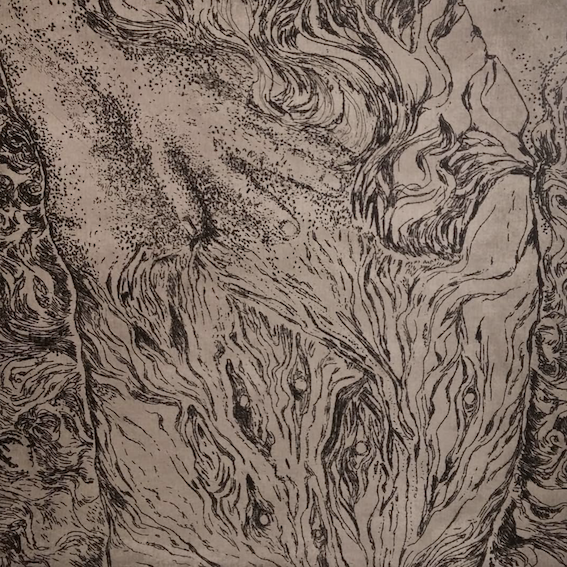Marija was born in Belgrade in 1988. She graduated from the Faculty of Applied Arts, Department of Graphics and Book Design. Since then, she has been working on traditional graphics, illustrations and graphics for video games.
She finds inspiration in books and music.

You originally studied archeology.
At what point did you become interested in visual art?
When I enrolled in archeology, we had to draw excavated artifacts at the faculty; those were my favourite classes. Eventually, I realized that archeology is not my biggest love. I decided to dedicate myself to drawing.
The illustrations by Radomir Reljic from the book Usta puna zemlje (Mouth full of earth) had the greatest influence on me. At that moment, I wanted to become an illustrator, to illustrate Kafka’s stories, Vasko Popa’s poetry and draw while listening to my favourite bands.
At the faculty, you devotedly researched graphics. That had a significant influence on your visual style. What attracted you to graphics?
At first, I liked that uncertainty. I didn’t know what the final work would be until I printed it, especially when I was doing the folds. Later on, I gained control over the process, so I tried to get a special atmosphere and effects that you couldn’t get in classic painting or drawing.
The graphic process and the result itself are something I cannot live without; they are wonderful.
Why do you think traditional graphics are still appealing even though the creation process is not easy at all?
Traditional graphics is complicated – it requires space, a lot of time and material just for one print. Although there are various competitions for exhibitions during the year, rarely does anyone manage to make a living just from selling graphics, so many turn to simpler methods.
Nevertheless, graphics retains artistic quality as well as drawing, painting or sculpture. It has its own scent, texture and poeticism which remain even with aggressive moves and witty motives.

Which contemporary graphic artists do you appreciate?
I could list all the colleagues I studied with, as well as the professors. Each of them has a personal handwriting that can be read without a signature. I have a great desire to own woodcuts with the Danube motives by Dimitrij Pecic.
”IN MY DRAWINGS, I AM FREE TO EXPRESSTHINGS WITHOUT WORDS,AND I DO IT THROUGH DREAMLIKE SCENES.
Marija Đeranović

Your new work, although digital, has retained the style you previously explored.
As I was mostly into graphics, I intuitively transferred that approach to digital drawing as well. I build surfaces with a similar method, which is a more complicated way to illustrate, but that way I have the most control, including leaving mistakes that have their own story and value.
You usually express yourself through the motives of fantastic creatures and landscapes. What significance do these motives have for you?
It’s strange, but I do not see them as a fantasy, at least not until someone points it out to me. These works were created because I wanted to evoke a certain atmosphere or emotion and I saw them in that ‘’surreal’’ form.
The motif I use most often is fish. I am still discovering their full meaning.
One of the first memories I have is of fishing and watching the fish flutter in the air. Carlos Castaneda said the goal is to handle a balance between the horror of being alive and the excitement of being alive.
Fish are stuck in my mind as a complexity of the universe, as a symbol of change, and also a symbol of an individual and a collective. Due to their aerodynamic shape,fluid movement and various colours.
Among other things, I see them as paths and opportunities that are given to us and for which we opt.









